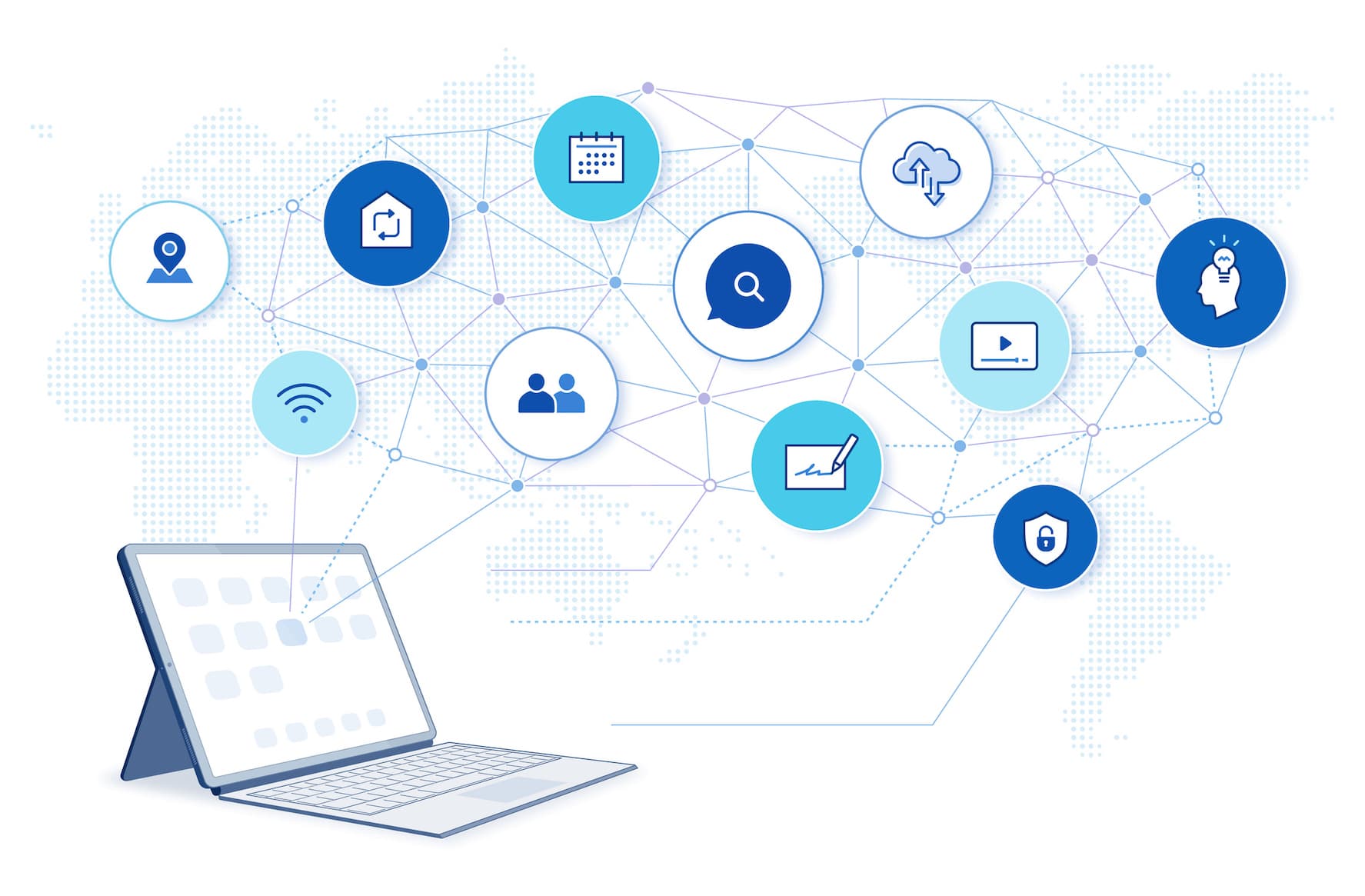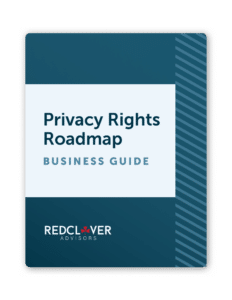Every June, the USA National Weightlifting Championship is held. It’s a weeklong feat of strength, with exhausting tallies. One standout performance that has us feeling vicariously sore was Shane Hamman’s 2004 record of a combined total of 430kg (947 pounds!) on the snatch and clean and jerk.
Heavy lifting is no joke—we spend much time and money trying to avoid it figuratively and literally. Why risk injury trying to pick up a heavy load yourself when there are alternatives?
Weightlifters might not ask themselves this question often, but businesses do.
This question drives software automation: achieving better results with less effort. Unfortunately, the wrong software can lead to more work, frustration, and worse results.
Avoiding this issue is a top priority for any business looking to automate privacy rights. Choosing the right privacy rights automation software is crucial; knowing how to evaluate your options can save you unnecessary pain.
What are common challenges businesses face when managing privacy rights?
As an undertaking, privacy programs can be complex and handling privacy rights is no exception. Along with the quickly evolving regulatory environment, there are real operational challenges to managing privacy rights. These include:
- Data proliferation: The sheer volume and spread of data across an organization can make it difficult to locate all relevant information quickly and accurately unless data is clearly and accurately mapped.
- Volume of requests: A high volume of privacy rights requests can overwhelm internal resources, especially without transparent processes and policies for team members to follow.
- Scope of requests: Privacy rights requests can vary widely in scope, and businesses must be prepared to handle a wide range of them.
- Identity verification: While necessary to ensure that the data is provided to the correct individual, verification can add complexity and delay to the process.
- Vendor relationships: Data privacy laws may require businesses to pass requests along to parties with whom they have shared the data subject’s personal information.
- Compliance timelines: Different data privacy laws have specific timelines for responding to privacy rights requests. Meeting these deadlines can be difficult, especially for businesses without clear policies or processes.
What can a privacy rights automation software do?
Privacy rights automation software is designed to enable and fulfill privacy rights requests, reducing some of the heavy lifting involved. Each type of software provides different feature sets, but generally speaking, it should facilitate functions like:
- Privacy rights request intake
- Identity verification
- Audit trails
- Automated data redaction
- Data subject communication
- Privacy rights reporting and analytics
What kinds of privacy rights automation should you consider?
Not all automation is the same. Generally speaking, there are two types of privacy rights automation that can be put to work.
- Automation for workflows and inbound receipt of requests
- Full automation, including connecting to systems for access or deletion
Each business has unique needs, so whether you opt for full or partial automation will depend on numerous factors.
Benefits of privacy rights automation software for businesses
The right privacy rights automation software can make your life so much easier. It can do a lot of things for you:
- Makes it easier to set up consistent workflows
- Increases accuracy and reduces manual effort involved in privacy rights requests
- Creates a central source of truth for storing and managing requests
- Provides visibility into status of requests, how many have been received, etc.
But don’t jump into a subscription yet.
Privacy rights automation software facilitates automation but won’t manage everything for you. Automation tools are great at connecting the dots, but you still need:
- Processes in place that define procedures for handling requests, including workflows for receiving, verifying, and fulfilling requests and protocols for data discovery, redaction, and secure delivery.
- Policies that align with legal requirements and industry standards, outlining how personal data is managed and protected.
- People trained to handle requests appropriately and how privacy functions within the organization.
Privacy Rights Roadmap: Business Guide
Discover how to simplify compliance with GDPR, CCPA, and other privacy laws with our comprehensive Privacy Rights Roadmap.

3 guidelines to follow when choosing the right privacy rights automation software
1. Understand your business’ privacy rights obligations and policies
With an ever-evolving privacy landscape, you must take a detailed look at your place.
- What kind of data does your business collect and process?
- Who has access to it, both internally and externally via third-party vendors?
- What privacy regulations do you need to comply with?
It’s also key to look at how you have handled privacy rights requests up until now.
- How many requests have you/will you receive?
- What policies, procedures, and tools have you used to fulfill requests?
- Who is involved in all of this?
Assessing where you’re at isn’t always pretty—it can spotlight bottlenecks and pain points that have been avoided. But the more thoroughly you evaluate how you’ve handled privacy rights, the easier it will be to find the right software.
2. Know where you’re going to get the biggest ROI on automation
Another benefit of the exhaustive analysis above? You’ll walk away with a clear idea of your priorities for the software. Using that information, compile a must-have list of features.
Still trying to figure out where to start? Here are a few examples of what might make the cut.
Automated data discovery and retrieval
Automatically searching for and retrieving personal data within your system can be a high priority if you’re a large organization with lots of data distributed across multiple systems. However, smaller businesses with limited data repositories and fewer requests might not need to automate this process.
Identity verification
Is a requester the legitimate data subject? You’ll need to know if you want to prevent unauthorized access. This capability is paramount for businesses handling sensitive personal data, like financial institutions or healthcare providers.
If you have less sensitive data or operate in a less regulated industry, though, this might not be a high priority in your software.
Keep in mind, though, it doesn’t matter how big or small your business is. While not all rights need verification, it’s important to incorporate identity verification where you can.
Another note: not all privacy rights automation software has this built in. If this is a priority, check carefully to ensure this feature is included.
Automated redaction
Automatically redacting sensitive information from documents before sharing them with a requester supports privacy compliance. For businesses with large amounts of unstructured data where manual redaction would be cumbersome and error-prone, this can be a big time saver—but not for companies with limited sensitive information.
This list isn’t exhaustive, but it highlights how businesses can start considering ways to automate privacy requests based on their specific needs. Not every business will have the same list. Just because software has a particular capability doesn’t mean you need it.
There are lots of factors to consider. Remember that not all businesses need to fully automate privacy rights requests. That’s why it’s important to consider what your organization needs are. This can be based on volume of requests, complexity to fulfill them, and total resources required for privacy rights requests.
3. Look at the bigger picture
Even when software is as specialized as privacy rights automation software is, it doesn’t exist in a vacuum. It’s part of your overall business operations. As such, it needs to meet bigger-picture objectives for your tech stack.
It connects and integrates with your existing systems
Where it makes sense for your organization, look for privacy rights software that can connect with your systems, including SaaS apps, APIs, CRMs, and other marketing tools.
For example, if your website is hosted on a platform that doesn’t integrate with your privacy rights automation software, then you’ll create more problems trying to use both systems independently. The whole point is to make privacy rights a lighter—not heavier—lift for your business.
The privacy rights automation software can grow with you
Make sure your chosen software can scale as you grow your business. Switching between systems or creating an ever-growing tech stack can cost time and money down the road. Look for software that can stick with you for the long haul.
{{CHECKING}} The software can expedite the data subject access request (DSAR) fulfillment process
In many states, customers have the right to submit a DSAR to access what personal data your company has collected from them. Your business has to reply within a set number of days, though it can vary from state to state.
Your privacy rights automation software should be able to expedite this process or even complete it automatically (with oversight from your team). It can also flag risks that can be reviewed and mitigated with help from a privacy expert.
Your privacy rights automation software helps your business goals
The right solution will help you profitably manage your data. Look for solutions that automate compliance and focus on the entire data lifecycle, not just one aspect. Specialization may be cheaper in the short term, but it could cost you down the line.
It checks all your boxes
In addition to having the features you need, your software should:
- Be easy to use for both administrative and regular users.
- Be easy to integrate with existing systems.
- Create the reports and dashboards you need with the information that matters to you
- Have a quality support team goes beyond “we’ll get back to you in 7-10 business days”.
- Have the bandwidth to accomplish what you need, and have the flexibility to accommodate other requirements, too.
- Have customization options to suit your business’s exact needs.
- Be easy to navigate.
Even if your software checks all these boxes out the gate, it’s necessary to regularly review how you’re using it. Annually, and any time there is a significant change in laws or your business, make sure it:
- Is still working correctly
- Captures changes in your business (e.g., new vendors, use cases)
- Captures changes in regulatory requirements (e.g., new regions, statutory updates, etc.)
- Reflects your privacy processes
Find the platform that works for you
Every business has different needs. An outside expert can help you find the data privacy software that feels like a perfect fit. Reach out to our team at Red Clover Advisors to book your free consultation.


